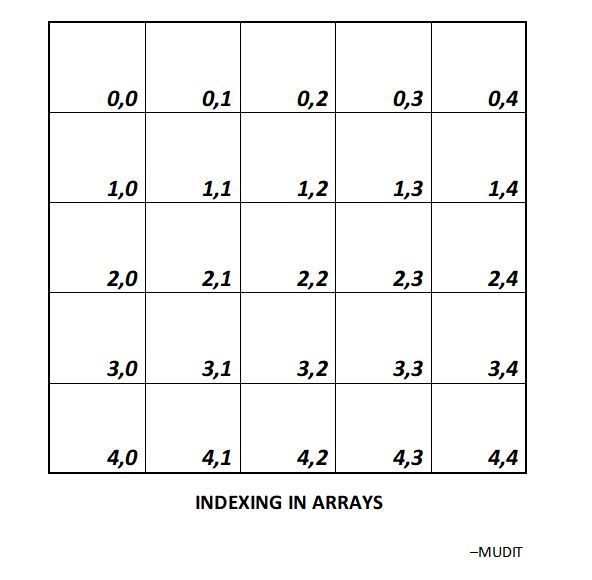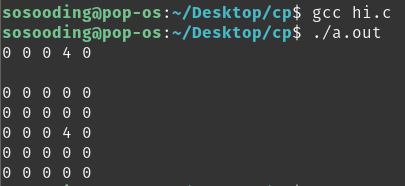Linked List and Array are probably the most basic data structures, but their use can often be confusing. The use of the appropriate data structure can often result in an easier and more efficient code. Linked List vs Array is also a popular interview question in data structures.
链表和数组可能是最基本的数据结构,但是它们的使用通常会造成混淆。 使用适当的数据结构通常可以使代码更简单,更有效。 链表与数组也是数据结构中一个流行的访谈问题。
链表与阵列 (Linked List vs Array)
This article will provide an in-depth comparison of these two data structures.
本文将提供这两种数据结构的深入比较。
We will compare them based on the following properties:
我们将基于以下属性对其进行比较:
- Definitions and Structures 定义和结构
- Operations and Time Complexity Analysis 运营和时间复杂度分析
- Memory Analysis 记忆分析
- Codes (C and Python) 代码(C和Python)
1.定义和结构 (1. Definitions and Structures)
Linked List is a data structure that stores linearly connected, non-contiguous data through references. This means that each node of the linked list would contain a reference to its next and/or previous node. This helps to make a chain of nodes that are linearly connected, but in memory, they may not be in a contiguous segment.
链表是一种数据结构,通过引用存储线性连接的非连续数据。 这意味着链表中的每个节点都将包含对其下一个和/或上一个节点的引用。 这有助于制作成线性连接的节点链,但是在内存中,它们可能不在连续的段中。
An array is a data structure that has a fixed size and contains a collection of data of a similar type that can be referenced through indexing. This means that before using an array we have to define its size and type and after storing the data we can refer to it using indexing.
数组是具有固定大小的数据结构,其中包含可通过索引引用的相似类型的数据集合。 这意味着在使用数组之前,我们必须定义其大小和类型,在存储数据之后,我们可以使用索引来引用它。
In the memory, arrays are present in a contiguous block of data as well.
在内存中,数组也存在于连续的数据块中。

2D Arrays
2D阵列
2.运营和时间复杂度分析 (2. Operations and Time Complexity Analysis)
We will compare the data structures based on the following operations:
我们将根据以下操作比较数据结构:
- Insertion and Deletion 插入和删除
- Accessing Elements 访问元素
插入和删除 (Insertion and Deletion)
Insertion and Deletion in Linked List can be done at the beginning, in the middle or at the end.
可以在开头,中间或结尾处完成“链接列表”中的插入和删除操作。
- If insertion or deletion is done at the beginning, then we just need to reassign the references at the head thus, this is an O(1) operation. 如果插入或删除是在开始时完成的,那么我们只需要在开头重新分配引用,这就是O(1)操作。
- If insertion or deletion is done in the middle or at the end, then we first need to reach the required position in O(N) time and then reassign the references in O(1) time. This takes O(N + 1) = O(N) time. 如果插入或删除是在中间或结尾完成的,那么我们首先需要在O(N)时间到达所需位置,然后在O(1)时间重新分配引用。 这需要O(N +1)= O(N)时间。

Linked List Insertion
链表插入
For an array, wherever the insertion or deletion is done, we always need to shift rest of the array to balance the indexing, thus these operations take O(1) time for doing the operation and O(N) time for balancing the indexing. Thus, it takes O(N + 1) = O(N) time always.
对于一个数组,无论插入或删除完成什么地方,我们总是需要移动数组的其余部分来平衡索引,因此这些操作花费O(1)时间进行操作,花费O(N)时间平衡索引。 因此,总是需要O(N +1)= O(N)时间。

Array Insertion
数组插入
访问元素 (Accessing Elements)
In a Linked List, to access an element we have to reach its position through a traversal from the start that takes O(N) time.
在链接列表中,要访问元素,我们必须从开始经过O(N)时间的遍历来达到其位置。
In an array, we have indexes which we can directly refer to. This is useful because now, we don’t have to do a traversal and thus, accessing takes O(1) time.
在数组中,我们有可以直接引用的索引。 这很有用,因为现在我们不必进行遍历,因此访问需要O(1)时间。
3.记忆分析 (3. Memory Analysis)
Linked List is almost always a more memory efficient way to store data. This is because we assign the data in a Linked List dynamically, and its size can be shrunk and expanded according to use.
链表几乎总是一种更节省内存的方式来存储数据。 这是因为我们动态分配了链表中的数据,并且可以根据用途缩小和扩展其大小。
Arrays on the other hand, always have a fixed size. If an element is not assigned any value, then it still remains a part of the array and will still use up memory.
另一方面,数组始终具有固定大小。 如果未为元素分配任何值,则它仍将保留为数组的一部分,并且仍将消耗内存。
But this does not mean that arrays are always less efficient. Arrays only take up the memory that they are assigned whereas Linked List will take up memory for storing the data as well as storing the references. Also, for some operations like sorting, we need extra space to store and shift the elements, which is efficient in arrays.
但这并不意味着数组总是效率较低。 数组仅占用分配给它们的内存,而“链接列表”将占用用于存储数据以及存储引用的内存。 另外,对于某些操作(如排序),我们需要额外的空间来存储和移动元素,这在数组中很有效。
链表实现 (Linked List Implementations)
1. Python (1. Python)
class Node:
def __init__(self, data):
self.data = data
self.next = None
class LinkedList:
"""
Initialize the list by assigning
head = NULL.
"""
def __init__(self):
self.head = None
'''
Returns the linear traversal of the
Linked List in the form of a list.
Initially, we can define a node that
points to the head of the linked list
and then we can keep sending it forward
in the Linked List till we don't hit an end.
'''
def traverse_list(self):
# Node that points to the head, initially.
cur = self.head
ret = []
# Loop to send the cur node to the end.
while cur:
ret.append(cur.data)
cur = cur.next
# Returns the Linear Traversal in a list.
return ret
'''
To insert a node, we have 3 cases:
1) Empty List
2) Insertion at the beginning
3) Insertion in the middle/at the end
For insertion at the end, we can loop till
one element before the required position
and then do the relinking of references.
'''
def insert_node(self, pos, data):
new_node = Node(data)
cur_node = self.head
# Case 1 : Empty List
if cur_node is None:
self.head = new_node
# Case 2: Insertion at the beginning
elif pos == 0:
new_node.next = self.head
self.head = new_node
# Case 3: Insertion in the middle/at the end
else:
while pos - 1 > 0 and cur_node.next is not None:
cur_node = cur_node.next
pos -= 1
next_node = cur_node.next
new_node.next = next_node
cur_node.next = new_node
return True
'''
To delete a node, we have 5 cases:
1) Deletion from Empty List
2) Deletion at the beginning
5) Delete a node that does not exist
3) Deletion at the end
4) Deletion in the middle
For deletion of a node, we first reach
one node before the required position
through a linear traversal and then relink
the references accordingly.
'''
def remove_node(self, pos):
# Case 1 : Empty List
if self.head is None:
return False
# Case 2 : Deletion at beginning
elif pos == 0:
self.head = self.head.next
return True
else:
cur = self.head
while pos - 1 > 0 and cur is not None:
cur = cur.next
pos -= 1
# Case 3 : Delete a node that does not exist
if cur is None:
return False
# Case 4: Deletion at the end
elif cur.next is None:
cur = self.head
while cur.next.next is not None:
cur = cur.next
cur.next = None
return True
# Case 5 : Deletion in the middle
cur.next = cur.next.next
return True
a = LinkedList()
a.insert_node(0, 3)
a.insert_node(0, 2)
a.insert_node(0, 1)
print("Linked List :", a.traverse_list())
a.remove_node(2)
print("Linked list :", a.traverse_list())Output

输出量
2. C (2. C)
#include<stdio.h>
#include<stdlib.h>
#include<stdbool.h>
struct node{
int data;
struct node *next;
} *head = NULL;
struct node *make_node(int data){
struct node *new = (struct node *)malloc(sizeof(struct node));
new->next = NULL;
new->data = data;
return new;
}
/*
To insert a node, we have 3 cases:
1) Empty List
2) Insertion at the beginning
3) Insertion in the middle/at the end
For insertion at the end, we can loop till
one element before the required position
and then do the relinking of references.
*/
bool insertNode(int pos, int data){
struct node *newNode = make_node(data), *curNode = head;
//Case 1 : Empty List
if(curNode == NULL){
head = newNode;
}
//Case 2: Insertion at the beginning
else if(pos == 0){
newNode->next = head;
head = newNode;
}
//Case 3: Insertion in the middle/at the end
else{
while(pos - 1 > 0 && curNode->next != NULL){
curNode = curNode->next;
pos--;
}
newNode->next = curNode->next;
curNode->next = newNode;
}
return true;
}
/*
Initially we can define a node that
points to the head of the linked list
and then we can keep sending it forward
in the Linked List till we don't hit an end.
*/
void traverseList(){
struct node *cur = head;
while(cur){
printf("%d ", cur->data);
cur = cur->next;
}
printf("\n");
}
/*
To delete a node, we have 5 cases:
1) Deletion from Empty List
2) Deletion at the beginning
5) Delete a node that does not exist
3) Deletion at the end
4) Deletion in the middle
For deletion of a node, we first reach
one node before the required position
through a linear traversal and then relink
the references accordingly.
*/
bool removeNode(int pos){
struct node *cur;
//Case 1 : Empty List
if(head == NULL)
return false;
//Case 2 : Deletion at beginning
else if (pos == 0){
head = head->next;
return true;
}
else{
cur = head;
while (pos - 1 > 0 && cur != NULL){
cur = cur->next;
pos--;
}
//Case 3 : Delete a node that does not exist
if(cur == NULL)
return false;
//Case 4: Deletion at the end
else if(cur->next == NULL){
cur = head;
while(cur->next->next != NULL){
cur = cur->next;
}
cur->next = NULL;
return true;
}
//Case 5 : Deletion in the middle
cur->next = cur->next->next;
return true;
}
}
int main(){
insertNode(0, 3);
insertNode(0, 2);
insertNode(0, 1);
traverseList();
removeNode(3);
traverseList();
return 0;
}Output

输出量
数组实现 (Arrays Implementations)
1. Python (1. Python)
N = 10
singleDimensionalArray = [0 for i in range(N)]
multiDimensionalArray = [[0 for x in range(N)] for y in range(N)]
A = 4
pos = 5
singleDimensionalArray[pos] = A
X, Y = 2, 3
multiDimensionalArray[X][Y] = A
print(singleDimensionalArray)
for i in multiDimensionalArray:
print(i)Output:
输出 :
2. C (2. C)
#include<stdio.h>
#include<stdlib.h>
#include<stdbool.h>
#define N 5
int main(){
int singleDimensionalArray[N] = {0};
int multiDimensionalArray[N][N] = {0};
int A = 4;
int pos = 3, X = 2, Y = 3;
singleDimensionalArray[pos] = A;
multiDimensionalArray[X][Y] = A;
int i, j;
for(i = 0; i < N; i++){
printf("%d ", singleDimensionalArray[i]);
}
printf("\n\n");
for(i = 0; i < N; i++){
for(j = 0; j < N; j++){
printf("%d ", multiDimensionalArray[i][j]);
}
printf("\n");
}
return 0;
}Output

输出量





















 740
740

 被折叠的 条评论
为什么被折叠?
被折叠的 条评论
为什么被折叠?








